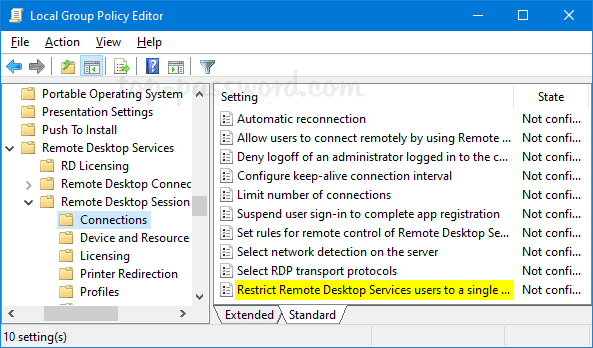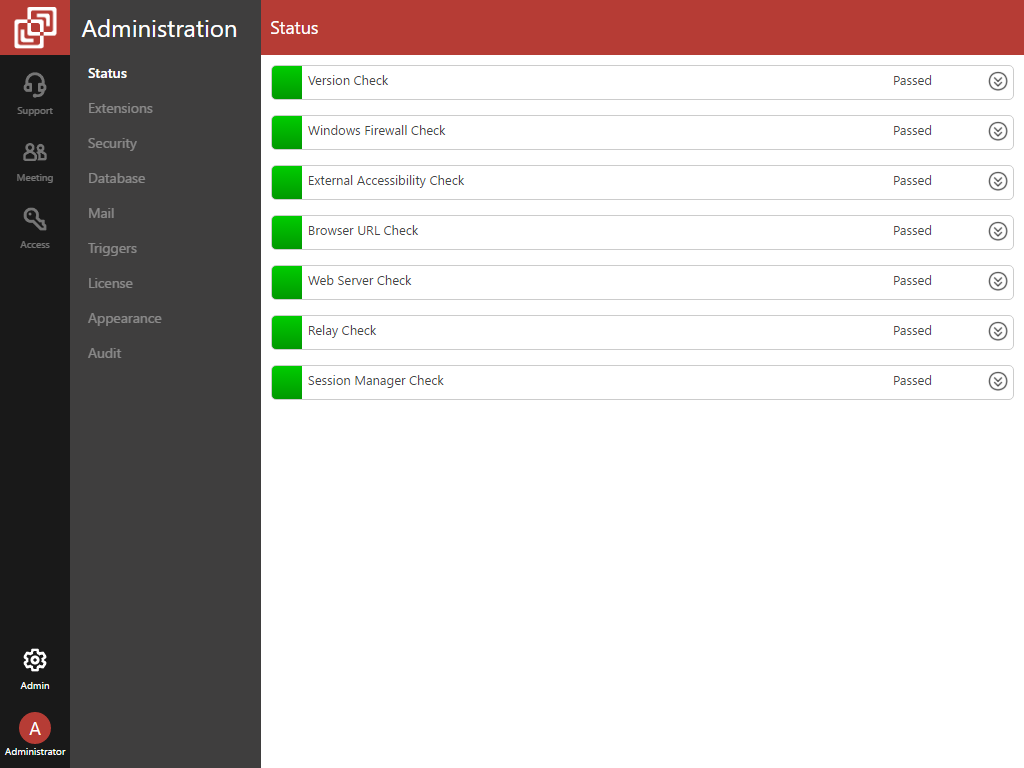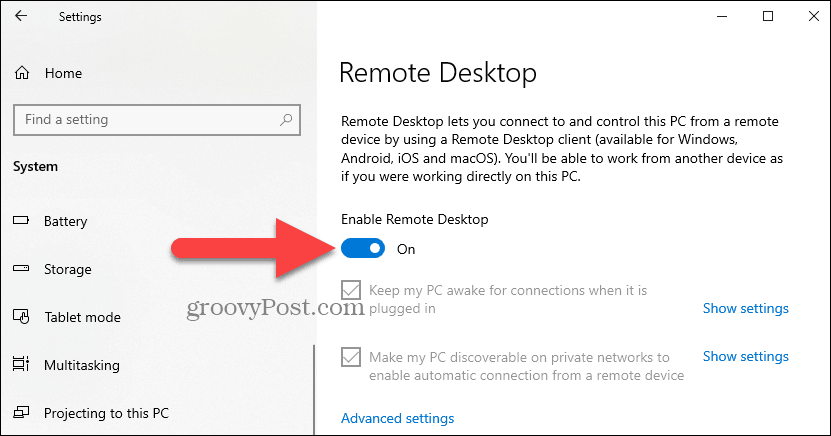- To do this, the remote desktop connection must be activated under Windows 10 on the target computer! Please start via the Windows 10 Run window (with the key combination Win-Logo + R) and in the edit box enter the command: mstsc.exe, then open or start the program for Windows -10 remote desktop connection.
- Install the client. Choose the client that matches the version of Windows. The new Remote Desktop client (MSRDC) supports Windows 10, Windows 10 IoT Enterprise, and Windows 7 client devices.
- Remote Desktop Protocol (RDP) is a Windows feature which is used to connect remotely to a windows based computers via RDP. In order to connect over RDP, both the computers must be connected to the internet and RDP should be enabled on the destination system.
Setting up a remote desktop allows you to access your computer wherever you are and control it as if you were directly in front of the keyboard. By using the built-in Remote Desktop Connection app in Windows 10, you can troubleshoot issues, access files, and so much more. Here’s how to set up a remote desktop in Windows 10 and how to remotely access another computer over the internet. Beautiful soup web scraping python.
How to Set Up Remote Desktop Windows 10
Remote Desktop Protocol (RDP) has been a feature of Windows since the XP Pro days. It makes it easy to connect from one PC or device to another to retrieve files or provide PC support. IMHO, the Remote Desktop Connection app is woefully old and kinda Windows XP-like in its style. There is a Windows Store Remote Desktop app at and even a Remote Desktop Assistant at that can help set up older machines (earlier than Windows 10 version 1709 (I had no idea this existed!).

To set up a remote desktop in Windows 10, go to Settings > System > Remote Desktop. Then turn on the slider for Enable Remote Desktop. Next, search Settings for Allow an app through Windows firewall and enable the Remote Desktop app for Private and Public.
Note: You can only run the Remote Desktop Connection app if you are using Windows 10 Professional or Enterprise. If you are using Windows 10 Home edition, check out our guide on how to use Quick Assist to remotely control a computer.
- Click the Windows Start button. This is the button with the Windows logo in the bottom-left corner of your screen. Do this from the host computer (or the computer you will be trying to access remotely).
- Then click Settings. This is the gear-shaped icon just above the power button.
- Next, click System.
- Then click Remote Desktop in the left sidebar. You can find this by scrolling down. It is the icon that looks like greater than and less than signs pointing at each other.
- Next, click the slider next to Enable Remote Desktop. This will cause a new window to pop up.
- Then click Confirm. A pop-up box appears asking you if you would like to enable remote desktop. It also reminds you that doing so will allow you and other users in your User accounts to connect to the PC remotely. Then you will need to change your firewall settings in order to access another computer over the internet.
- Next, type firewall into the search bar of the Settings window. You can do this by clicking the search box that says Find a setting at the top of the left sidebar. Once you type firewall, you will see search results populated under the search bar.
- Then choose Allow an app through Windows firewall. If you don’t see this option, click Show All, and then select it from the list.
- Then click Change settings. Initially, the apps and the checkboxes beside them will be grey or disabled. Once you click Change settings, they will turn black and become enabled.
- Tick the Private and Publiccheckboxes to the right of Remote Desktop. Make sure both that the boxes under the Private and Public columns are checked.
- Finally, click OK.
Once you enable your remote desktop and allow the app to communicate through your firewall, you can access that computer over the internet. Here’s how:

How to Remotely Access Another Computer Over the Internet
There are two ways you can remotely access another computer over the internet – depending on whether you’re on the same network or not. If you are accessing another computer within the same network, you just need to know the PC name. If otherwise, you need to know your public IP and set up port forwarding.
How to Remotely Access Another Computer Over the Internet Within Your Network
To remotely access another computer within your network over the internet, open the Remote Desktop Connection app and enter that computer’s name, and your username and password.
- Click the magnifying glass icon in the bottom-left corner of your screen. Do this from the computer you want to access over the internet.
- Then type About into the search bar and click Open.
- Next, copy your computer’s name. You can find this next to Device name. You can either write this name down, or copy and paste it into a text document, an email, or any other method that you want.
Note: If this name is too complicated, you can click the Rename this PC button below. This lets you choose your own name for your PC.
- Then open the Windows search bar and type remote desktop connection. This is the magnifying glass icon in the bottom-left corner of your screen.Do this from the client computer or the computer that you will use to establish the remote connection.
- Next, click Open.
- Then click Show Options. You can see this in the bottom-left corner of the window.
- Next, enter the computer’s name. This is the name that you copied down in the previous steps.
- Also, enter the username. If this information is filled in already, make sure it is correct. You can find your username by going to Settings > Accounts. Then you will see your username under your profile image.
- Then click Connect.
Note: You can also change additional settings by clicking the Display, Local Resources, Experience, and Advanced tabs.
- Next, enter your computer’s password and click OK. This is the password that you use to sign in to the computer when you are on the lock screen.
Note: You might encounter a prompt asking you if you want to connect even if the identity of the remote computer cannot be identified. Just click on Yes. Tor for macbook pro.
- Finally, wait for the remote connection to be configured. After the step above, you will see a green progress bar. Wait for it to complete. Briefly, you will see a black window which turns to blue. Once the remote connection is successfully established, you will see a view of the computer you’re trying to access.
How to Remotely Access Another Computer Outside Your Network

- Open a web browser. Do this from the host computer or the computer you will be trying to access remotely.
- Then type what is my IP into the address bar.
- Next, copy the public IP address listed. Your public IP address will be a series of numbers separated by periods.
Note: Do not share your public IP address with anyone you don’t trust. They can use this information to hack your computer and steal your personal information, such as bank details.
- Then open TCP port 3389 on your router. If you don’t know how to do this, check out our step-by-step guide on how to port forward.
Note: You should also set a static IP address for the computer you are trying to access. If you want to know how to set a static IP address for your Windows 10 PC, check out our step-by-step guide here.
- Next, open the Remote Desktop Connection app. Do this from the client computer (or the one you will use to remotely control the host computer).
- Enter your public IP address in the Computer field. This will be the public IP address you copied down earlier.
- Then click Connect.
- Enter your credentials. On the Windows Security page, type in the username and password of your remote server.
- Click OK.
Note: You might encounter a prompt asking you if you want to connect even if the identity of the remote computer cannot be identified. Just click on Yes.
- Finally, wait for the remote connection to be configured. After the step above, you will see a green progress bar. Wait for it to complete. Briefly, you will see a black window which turns to blue. Once the remote connection is successfully established, you will see a view of the computer you’re trying to access.
If you’re looking for a less complicated way of accessing your computer remotely, check out our article on how to remotely control a Windows 10 or Mac computer.
Was this article helpful?
Related Articles
Windows 10 has recently hit 24% of the total market share and is now active on 350 million devices according to Microsoft. Impressive, right? As Windows 10 continues to grow, more and more tech support specialists begin to wonder how they can easily upgrade their clients’ or employees’ machines remotely.
Looking for a fast and easy solution, too? We’ve got you covered.
Our short demo video and the transcript below will guide you through all the steps needed to install Windows 10 on a remote computer right from the comfort of your office.
First of all, run the FixMe.IT Expert application, start a new support session, enter the Client ID provided by the remote party, and click Connect.
After the client has approved the remote connection, select the Remote Control operation. This will provide you with full access to the client’s desktop, as well as control over the remote mouse and keyboard. If the client’s computer is eligible for the update you will see a special Windows 10 icon in the System Tray. Click on it, and then choose the Upgrade Now option. After this, Windows will check the system for required updates and install them on the remote machine.
When the system is finished with all the preparations, you will see a dialog window prompting to move forward with the upgrade. Accept the terms, and then Windows will download some additionally required files. When the system is fully ready, it will prompt you to start upgrading.
As soon as the upgrade’s started, Windows will request a reboot of the remote machine. During the reboot operation you won’t be able to see the client’s desktop, so you’ll have to wait for a bit. The cool thing is that the remote connection will be automatically restored following the reboot’s completion without requiring any manual reconnect or the client’s input.


When the reboot is finished and Windows 10 is installed on the remote machine, the remote session will automatically resume and a corresponding message will appear on your Expert interface. Run Remote Desktop Control again, and here’s the client’s freshly installed Windows 10!
Now log into Windows through the standard logon screen, click on the Use Express settings button, go through some basic app preparations, etc.
Voila, you’re now logged into the upgraded system where all existing files have been successfully restored! To provide the client with remote assistance in the future, you may setup the FixMe.IT Unattended Client and conveniently connect whenever they require support.
Please note that the free upgrade offer from Microsoft has long expired. However, there’s still a way to get Windows 10 for free if you’re looking to upgrade your personal machine(s) remotely.
Got questions about FixMe.IT? Don’t hesitate to contact us directly, or leave us a shout on Twitter. Follow Techinline on Facebook, LinkedIn and YouTube to get all the latest news and updates as they happen!
Download Windows 10
Related Posts
